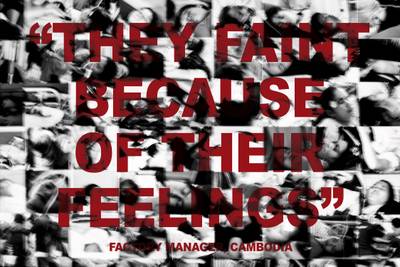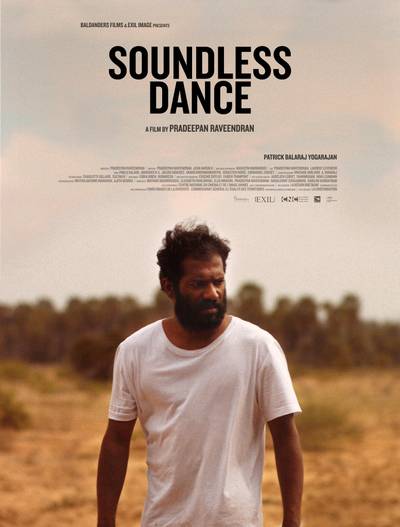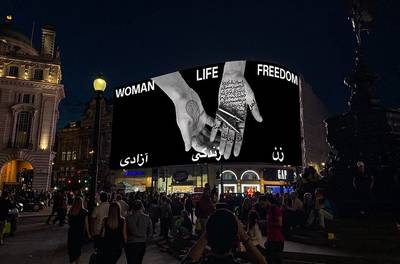

The cover of Laura Malmivaara’s book Vaiti. Publisher: Otava. 2021
Aurora Lemma is a Helsinki-based freelance writer, medical doctor and a student of world politics. She has written to various Finnish media and is currently co-editing an essay collection on death, to be published by WSOY in the spring of 2022.
A lot has been said and written about autofiction. It has often been described as a trend, and judging by the number of works labeled “autofiction” coming out, this labeling seems justifiable. As often happens, there is an urge to tie the growing interest in autofiction into other current phenomena, to show what this particular trend reveals about our times. There is no shortage of texts theorising the link between autofiction and the time we live in. It has been said to be the product of a generation that grew up watching reality TV, of the influencer time, the post-truth era, the ambiguity and spallation of our times, of individualism, the growing emphasis on the subject or the author, and the end of the traditional novel.
A significant amount of the writing around autofiction reminds us correctly that it is not really new – think, for example, of On the Road. It is, however, more common now than before. Autofiction is commonly defined as “a fictionalized autobiography.” It is written in the first person narrative and often includes long-winded (some might say tedious) descriptions of everyday life. Knausgård comes to mind as an obvious example.
One of the most recent additions to the Finnish autofiction canon is Laura Malmivaaras Vaiti. Translated directly into English, vaiti means silent. The protagonist of the book is an actress, like Malmivaara, whose film director ex-husband, like Malmivaaras, gets exposed in the aftermath of the Metoo movements landing in the Finnish film industry. Not accused of sexual harassment per se, but degrading and oppressive treatment of mostly female actors, the director in the book is called Atte, as if Malmivaara isn’t even trying to hide who her character is based on—and why would she, since it is obvious.
Cancel culture—defined as internet activism aiming to boycott people exhibiting socially unacceptable behavior—serves as the background for the book. Cancel culture receives a lot of space in the public discussion, both in Finland as well as abroad. Aku Louhimies, Malmivaara’s ex-husband, is perhaps the most apparent example of this culture in the Finnish context. Other examples from home are a bit harder to find. Of course, this depends on how we define cancel culture.
There are cases in Finland where people have lost, for example, singular awards or gigs, due to “wrong” opinions. But Louhimies is perhaps one of the few people whose actions have had a longer effect on their career and public life, although as is obvious by checking the current supply of Finnkino, even this effect seems to have been temporary. Other examples, like artists Pyhimys and Maustetytöt, who were recently called out for using the n-word in their songs, have continued their careers more or less successfully. Actors Aku Hirviniemi and Roope Salminen still show up on movie titles despite their sexual harrasment convictions.
Despite the hard to pin down nature of the phenomenon, social and mainstream media continue to worry about the effects of “cancel culture.” The largest Finnish media Helsingin Sanomat, has written more than one editorial on the topic. There is a lot of noise surrounding the question of how cancel culture will affect freedom of speech, art, and politics, yet usually the cases of misconduct that create demands for “canceling” appear as temporary storms, mostly on social media, and quickly die down in the fast news cycle, with at best ambiguous after effects. (Just a few weeks ago astronomer Esko Valtaoja used the n-word on a talk show discussing cancel culture which created a temporary commotion on social media with so far no apparent consequences.)
An autofictive book around such a polarizing and tense topic seems a bit scary at first. It is not common, but not uncommon either, for an autofictive book to be based on public events or figures. The set up presents many expectations—and fears—about the book. Is it an exposé or an effort to get the last word in, like in a very lengthy Facebook post?
Fortunately, that is not what the book is about. Malmivaara has herself described the book as a family history focused on women and as a story about staying silent. As those who are familiar with the event in question know, Malmivaara herself kept silent during the commotion and has said that during this silence, the book began to write itself.
Vaiti is not an answer to those questions that would have been presented at Malmivaara had she raised her voice during the event. The majority of the book is spent at the family cabin, where the protagonist tries to heal and deal with the public shaming the family has been subjected to.
Vaiti is not an answer to those questions that would have been presented at Malmivaara had she raised her voice during the event. The majority of the book is spent at the family cabin, where the protagonist tries to heal and deal with the public shaming the family has been subjected to. It also touches upon the protagonist’s seemingly complicated relationship with the feminist movement as a woman who feels they have been left out of all the empowerment happening around her. Flashbacks to the beginning of the relationship with the ex-husband and its eventual ending are mixed with inner discussions on femininity and empowerment.
The mother serves as the link between the protagonist and her family’s history of silence. The character of the mother is drawn beautifully and recognizably, at least if one is familiar with this sort of archetype of an older (Finnish) woman: stoic yet silly, she carries her own weight silently. A woman who has experienced scarcity and learned to take what is given to her gratefully. A woman who has raised children and taken care of the home, does not ask for much and accepts her part.
The book is bound around the peaceful everyday life of summer in the cabin between the protagonist and her parents. It does feel, however, that the actual culture of silence is only touched upon, besides the obvious fact that much is left unsaid between the characters, especially when it is emotionally uncomfortable. As it often is in this culture.
Perhaps more than anything, the story is a picture of a certain moment in the protagonist’s life, a moment where silence has been forced upon them, or at least that’s how it feels, instead of being a choice they’re used to making. As if when left with no other option than to stay silent, the silence has suddenly become visible and the words left unsaid have formed an unbreachable barrier between the protagonist and the rest of the world.
The culture of silence is an interesting frame for a story that is inevitably related to the Metoo movement, as the very purpose of the movement was to break the culture of silence around women’s experiences, specifically relating to sexual harassment. There is a certain bitterness in the protagonist’s relationship to the movement unfolding around her and to the obvious contradiction that a movement meant to liberate women’s voices has left her unable to speak. Despite some moments of angry scrolling through social media, the book doesn’t dwell upon this anger or focus on blaming feminism generally. More often than not, the character turns inward, suffering from a fear of being left on the outside and insecurities about her own femininity.
Perhaps the most troubling aspect of cancel culture is that it almost always focuses on individuals. This might not be the initial purpose – when actresses came out with stories of abuse by Louhimies, they were discussing the Finnish film industry and how it glosses over abusive behavior as much as he does. Yet in the news and social media, the conversation quickly filters institutional aspects into a discussion of whether or not a certain person is good or evil and whether or not we should oppose or admire him.
When the conversation turns to individuals, there is a risk of reproducing a cycle of abuse that actually began the conversation. As Malmivaara’s book shows, it is not only the person being called out that has to pay but also those close to them. Questions of reasonable consequences are lost in the hate-amplifying algorithms of social media.
Perhaps the reason it feels disturbing at times is related to the fact that autofiction is often about the lives of relatively privileged people. It dwells on the challenges and sorrows—no less real and genuine—of well-off people in well-off countries.
Even though the protagonist in Vaiti doesn’t aim to convince the reader of “her side” of the events, the inner monologues are obviously solely subjective. In interviews about the book, Malmivaara has spoken about the feedback and stories she’s received from people who have gone through similar things. The book is definitely a valuable description of what it feels like to go through a public scandal or to sit by while a person close to you does. It speaks to the natural fear we all harbor of being judged and, as a result, being left on the outside. In this way, it works as a valuable reminder of the human emotions we go through when subjected to (public) criticism and the inward turn it most often brings up in us.
Still, at times, the personality and subjectivity can get tiring. It seems to inevitably miss an opportunity for a more general consideration of the human condition, as subjectivity is always incomplete in its analysis and often does not challenge. Autofiction has been praised for breaking the illusion of objectivity and showing the inevitability of our subjectivity. But this “surrender” to subjectivity does at times feel shrinking too, especially when one knows it is actually just that.
Perhaps the reason it feels disturbing at times is related to the fact that autofiction is often about the lives of relatively privileged people. It dwells on the challenges and sorrows—no less real and genuine—of well-off people in well-off countries. These challenges and sorrows are interesting and recognizable, especially when one happens to be a well-off person in a well-off country as well. It legitimizes them.
I don’t believe that autofiction’s popularity is explained by its being an accurate description of the ambiguousness and spallation of our times. To me, autofiction appears more as a familiar reaction to this ambiguity and spallation that is seen in the real world as well. That is, an inward turn, mining deeper into our own points of view.
Of course, to understand the world, we must first turn inward and understand ourselves. But it sometimes feels like the process stops there. We turn inward and justify everything from there, instead of reflecting and evaluating our inner lives against our actions in the world.
Individual reflections are also inadequate explanations of social problems when considering abuse, as the problems are often institutional. Yet institutions are rarely put in the spotlight since they are more abstract and harder to pin down. But when discussing the case of Louhimies, it is perhaps less relevant whether or not he has changed his ways of working, but whether or not the Finnish film industry has changed.
NONIIN recently published a critique written by Pietari Kylmälä and Eero Yli-Vakkuri, aimed at the contemporary art museum Kiasma for having a supporter of the state of Israel in their support foundation. Businessman Poju Zabludowicz has, for example, funded a lobbying company for the state and has come to wealth with money from arms deals between Finland and Israel. The museum director at Kiasma answered this critique with a statement describing the funding mechanisms and institutional characteristics of Kiasma. In the statement, it is hard to find an answer to the actual questions of the critique – namely, the questions of art as a neutraliser of political agendas and art-washing, and whether or not Kiasma sees having a pro-Israel lobbyist in their support foundation as contradictory to their values of equality and fairness. The response glosses over these questions and offers the following sentence instead:
“We have updated our equality program, and safer space principles recently, which are available from Kiasma’s website.”
This sentence is descriptive of institutions’ reactions to calls for social justice. Rather than actually conversing on the topic and questions of myriad power relations and how they uphold oppression, they adapt to the terms of social justice activists and perform listening and understanding. Individuals are then left in the spotlight to justify their actions, often brought up by institutional patterns. Sadly, this often ends up positioning these people on the opposite side of the discussion, since that is the only place where they find support and understanding, no matter how bigoted it might be.
The protagonist in Vaiti and the book in general are refreshing in the sense that even though the protagonist is stuck in her own thought patterns and insecurities, she mostly doesn’t try to justify her actions through them. Especially when dealing with such current phenomena as Metoo, feminism, and cancel culture, it’s refreshing that the protagonist does not try to reach a conclusion or explain everything in a way that would suit her best. The point of view stays open until the end. There is something good in what happened and something bad. There is good in people and also bad. Most of the time, things are not black or white, they are just complicated.







